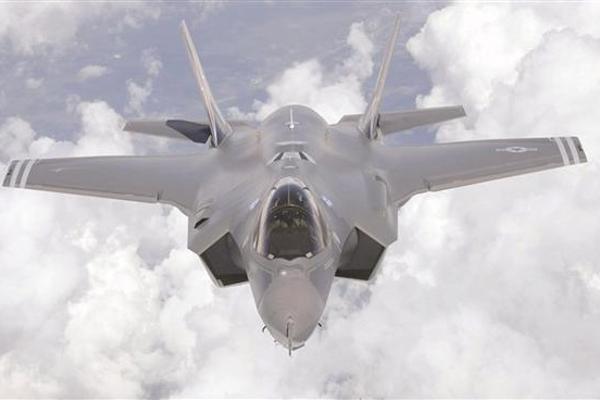US sees first drop in F-35 costs, other programs steady
WASHINGTON - Reuters


The members of the US-led consortium to build the F-35 fighter are Turkey, Britain, Canada, Italy, the Netherlands, Australia, Norway and Denmark. Hürriyet photo
The Pentagon has told Congress it expected a 1 percent drop in the cost of its biggest weapons program, the Lockheed Martin Corp. F-35 fighter jet, while averting the huge cost increases seen on other weapons programs in recent years.The Defense Department’s annual report on May 23 to lawmakers showed a $40 billion, or 2.4 percent, cost increase in 78 major arms programs, mainly due to accounting changes and higher order quantities. But none of the cost increases were big enough to trigger the congressionally mandated live-or-die reviews that have been commonplace in recent years.
The cost of the developing and building the F-35, a new radar-evading fighter jet, is now projected at $391.2 billion, down from last year’s estimate of $395.7 billion, according to the Pentagon’s “selected acquisition report.
The report did not revise the projected $1.1 trillion cost of operating and maintaining the fleet of 2,443 new fighter jets over the next five decades, or the projected cost per flying hour, despite ongoing work by the F-35 program office and the main contractors to reduce those costs.
Lockheed is developing three models of the supersonic, single-seat F-35 fighter for the U.S. Air Force, Navy and Marine Corps, as well as eight countries that are helping fund its development: Britain, Australia, Canada, Norway, Denmark, Italy, the Netherlands and Turkey. Israel and Japan have also placed orders for the new plane.
Current plans call for the U.S. military to buy a total of 2,443 F-35 jets in coming years, with its allies slated to buy 721 additional fighters, although many analysts believe mounting budget pressures could ultimately reduce the total purchase.
Lockheed to continue reducing cost
Lockheed, the Pentagon’s largest supplier, said it would continue to work with defense officials to drive the cost of the F-35 program down even further.
“This is the first year a cost reduction was noted. We will work with the F-35 Joint Program Office to implement further cost saving measures which will result in additional significant decreases to the total program cost,” said Lockheed spokesman Michael Rein.
The Pentagon report projected the total cost to develop, buy and operate the new fleet of F-35 fighter jets would be just over $1.50 trillion over the 50-year life of the program. That is down slightly from last year’s estimate of $1.51 billion, reflecting the lower projected acquisition cost.
It said the average cost of the conventional F-35A model, excluding R&D costs, had dropped to $76.8 million per plane in 2012 dollars, compared with $78.7 million a year earlier.
Projected operating and maintenance costs, which include the cost of fuel, will be updated at a high-level meeting of U.S. defense officials this fall, according to an information guide released by the Pentagon’s F-35 program.
The office noted that expected inflation in fuel costs, which account for 14 percent of the total operating cost estimate, would have a big impact. It assumes that fuel costs will rise to $8.04 per gallon, compared with $4.24 in 2012.
Measured in 2012 dollars, or excluding inflation, the program’s total projected cost dropped $11.1 billion to $936.4 billion from $947.5 billion a year earlier.
The Pentagon report included updates on 77 other big weapons programs, including the Air Force’s Evolved Expendable Launch Vehicle (EELV) program, which buys launch services to lift U.S. military and intelligence satellites into orbit.
The report said the cost of the EELV program was expected to more than double, to $70.7 billion, because of a new plan to buy 60 additional launches and extend the schedule for launches through fiscal 2028.
United Launch Alliance, a joint venture run by Lockheed Martin and Boeing Co., currently provides the launch services to the Air Force. But the service is trying to open the launch program to competition from other companies, including privately owned Space Exploration Technologies.
